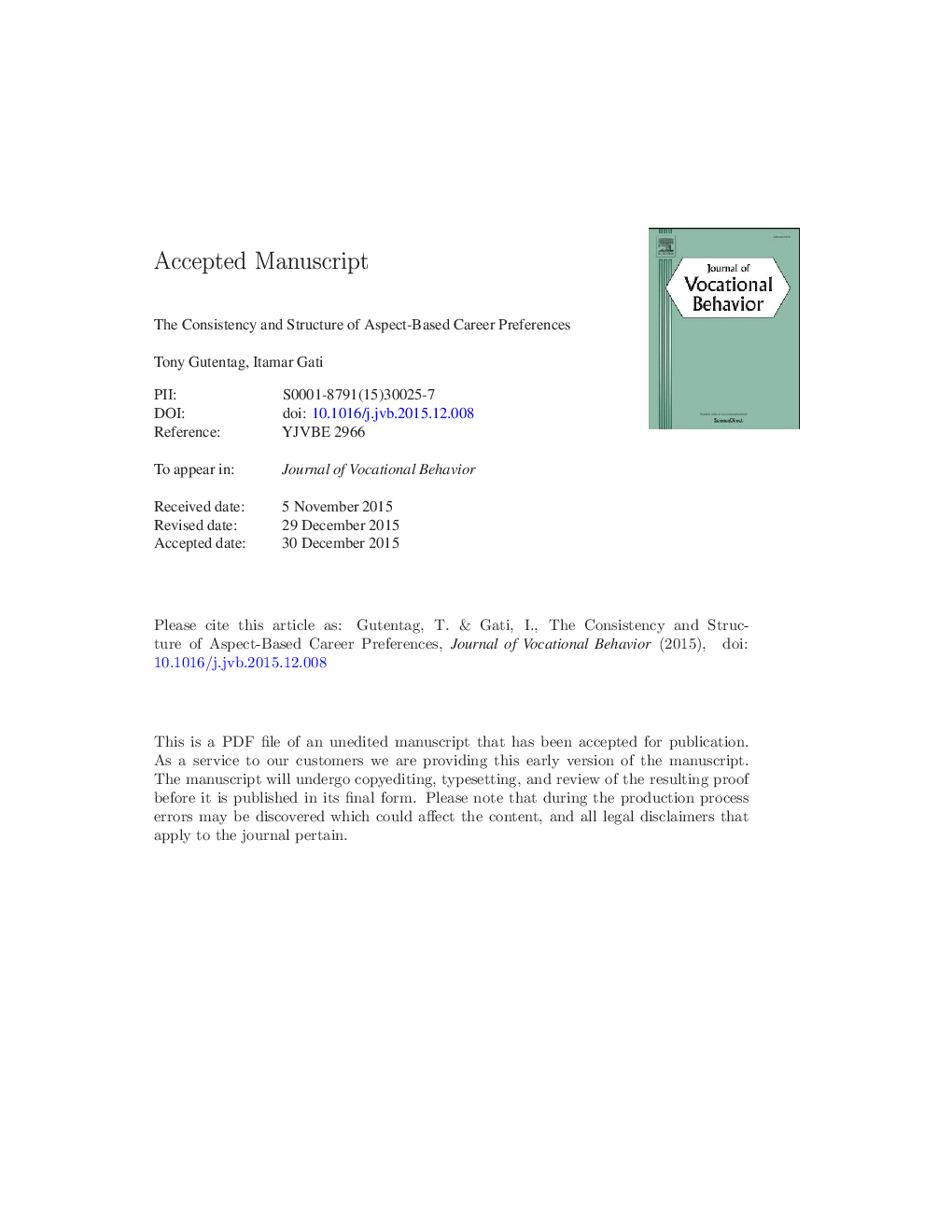| کد مقاله | کد نشریه | سال انتشار | مقاله انگلیسی | نسخه تمام متن |
|---|---|---|---|---|
| 7247572 | 1471806 | 2016 | 38 صفحه PDF | دانلود رایگان |
عنوان انگلیسی مقاله ISI
The consistency and structure of aspect-based career preferences
ترجمه فارسی عنوان
سازگاری و ساختار ترجیحات حرفه ای مبتنی بر جنبه
دانلود مقاله + سفارش ترجمه
دانلود مقاله ISI انگلیسی
رایگان برای ایرانیان
کلمات کلیدی
جنبه های شغلی، تصمیم گیری شغلی، تست مجدد اعتبار، ثبات، ساختار جنبه های حرفه ای،
موضوعات مرتبط
علوم انسانی و اجتماعی
مدیریت، کسب و کار و حسابداری
بازاریابی و مدیریت بازار
چکیده انگلیسی
Career aspects (e.g., work environment, using verbal ability, length of training, teamwork) are an elaboration and extension of vocational interests. Aspect-based preferences can serve individuals and their career counselors only if they are reliable and stable. Study 1 estimated the two-week test-retest reliability of 213 college freshmen's preferences in 31 career aspects and the two-year stability of these preferences for 132 of these freshmen. The two-week reliability and the two-year stability of both the within-aspect preferred levels (e.g., “only indoors” most preferred, but “mostly indoors” is also acceptable) and the aspect importance were tested for each of the aspects. The interquartile ranges of the two-week reliability of the aspect importance and of the preferred within-aspect levels were .54-.62 and .63-.74 for the 31 aspects; the interquartile ranges of the two-year stabilities were .38-.48 and .48-.59, respectively. These interquartile ranges reflect the variance in consistency among the aspects. Study 2 explored the structure of the aspects based on the pattern of associations among them. In addition, it examined the consistency of the aspect structures by comparing them in four samples (total N = 40,313). The structure was found consistent across time (Spearman rs = .88, .76 and .68, two weeks, two years, and 20 years later, respectively), within culture (rs = .75 and .76, for women and men, respectively), and across cultures (USA and Israel; rs = .64). Theoretical and practical implications are discussed.
ناشر
Database: Elsevier - ScienceDirect (ساینس دایرکت)
Journal: Journal of Vocational Behavior - Volume 93, April 2016, Pages 33-46
Journal: Journal of Vocational Behavior - Volume 93, April 2016, Pages 33-46
نویسندگان
Tony Gutentag, Itamar Gati,
